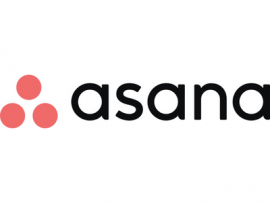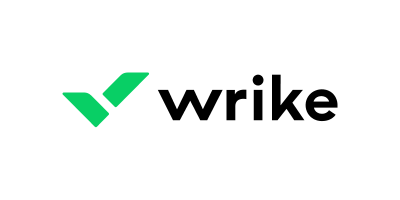-
Asana: Best overall
-
Airtable: Best for data-driven teams
-
Wrike: Best for reporting features
-
monday.com: Best for a balanced solution with a limited budget
-
Trello: Best for its kanban boards
-
ClickUp: Best for customized views
Previously, project management software was considered more suitable for larger businesses as they have broader and more complex projects and teams to manage. However, it is becoming more apparent that even small businesses need to use digital tools to maximize their efficiency and output to stay competitive and ultimately scale in today’s highly competitive business landscape. Here are six of the best project management software tools of 2023.
SEE: The 10 best project management software and tools for 2023 (TechRepublic)
Best project management software for small businesses
We compared the six solutions across their features and key factors like pricing and free trials.
| Software | Customizable workflows | Reporting features | Built-in automation | Built-in Agile | Free plan | Pricing | Integrations |
|---|---|---|---|---|---|---|---|
| Asana | Yes | Yes | Yes | No | Yes | Starts at $10.99 per user per month | 200+ apps |
| Airtable | Yes | Yes | Yes | No | Yes | Starts at $10 per user per month | 30+ tools |
| Wrike | Yes | Yes | Yes | Yes | Yes | Starts at $9.80 per user per month | 40+ tools |
| monday.com | Yes | Yes | Yes | No | Yes | Starts at $9 per user per month | 35+ integrations |
| Trello | Yes | Yes | Yes | No | Yes | Starts at $5 per user per month | 35+ integrations |
| ClickUp | Yes | Yes | Yes | Yes | Yes | Starts at $5 per user per month | 50+ native integrations |
Featured partners
Jump to:
- Key features of small business project management tools
- How to choose small business project management software
- Review methodology
Asana: Best overall

Asana is one of the top-rated tools for project management and work management, as it delivers critical features ranging from forms to boards, timeline management, automation and universal reporting among other effective features for small businesses.
SEE: Notion vs Asana: Project management software comparison (TechRepublic)
As a project management software, Asana ensures that users do not have to constantly move between different tools such as email and spreadsheets to manage their projects.
Pricing
- Basic: $0; remains free forever.
- Premium: $10.99 per user per month, billed annually, $13.49 per user per month billed monthly.
- Business: $24.99 per user per month, billed annually, $30.49 per user per month billed monthly.
Standout features
- Dashboards to examine progress across projects without manual effort.
- Suitable for bug tracking, sprint planning, product feedback, product launch, product roadmap and work request use cases for engineering teams.
- Automation to streamline marketing and creative processes.
- Integration with 100+ tools.
Pros
- Automated workflows to improve work management.
- Real-time tracking of reports, status updates and overall project progress.
- Simple task assignment and management.
- Improved communication as Asana ensures conversations are in one place.
Cons
- Asana can be overwhelming to new users as its user interface may come off as complex, therefore introducing a learning curve.
- No built-in time tracking.
For more information, check out our full Asana review.
Airtable: Best for data-driven teams

With the initial appearance of a spreadsheet, Airtable is a powerful project management software tool that fosters collaboration between teams that allows them to model their projects, define relationships and generate views tailored to their work. This makes Airtable a worthy choice for small businesses that base their project data on spreadsheets.
SEE: Airtable vs monday: Project management software comparison (TechRepublic)
Airtable offers numerous project management templates for different use cases to give its users the ability to pick up the tool with a minimized learning curve. Airtable is also arguably the easiest tool to use on this list.
Pricing
Airtable offers a 14-day free trial of the Pro version. No credit card is required to try out the premium plans.
- Free: For individuals and very small teams just starting out with Airtable.
- Plus: $10 per seat per month when billed annually, $12 per seat per month billed monthly.
- Pro: $20 per seat per month when billed annually, $24 per seat per month billed monthly.
- Enterprise: Contact Airtable sales for pricing information.
Standout features
- Interface Designer to enable teams to reimagine their workflows with custom interfaces.
- Views feature helps users generate views of data that are as flexible as the transformations of business data.
- Automations ensure that workflows are streamlined and as simple or complex as users require.
- Sync aligns teams around a single source of truth with real-time data from disparate data sources.
- Flexible reporting tools that are intuitive to both technical and non-technical users.
Pros
- Easy to use, particularly its templates for different use cases.
- Delivers a single source of truth.
- Highly customizable.
- Sleek user interface.
Cons
- The features offered by the free plan are limited.
- The great versatility of Airtable inadvertently introduces a learning curve.
For more information, check out our full Airtable review.
Wrike: Best for reporting features

Wrike is an all-in-one platform for managing projects, organizing work, enhancing collaboration and accelerating execution across the departments of its users.
SEE: Wrike vs Trello: Compare project management software (TechRepublic)
As project management software, Wrike empowers its customers to align their strategy with their execution to deliver success. Wrike cuts across strategic planning, project portfolio management, program and project management and corporate development.
Pricing
No credit card is required to try out Wrike’s premium tiers.
- Free: For teams starting out with Wrike.
- Team: Costs growing teams $9.80 per user per month.
- Business: For all teams across an enterprise. Costs $24.80 per user per month.
- Enterprise: For large teams. Reach out to Wrike for pricing information.
- Pinnacle: Best for teams with complex work needs. Contact Wrike for pricing information.
Standout features
- Strategic planning to facilitate transparent operations and ultimately help users plan, visualize and track OKRs.
- Business-wide Agile planning and a platform that supports sprint or Kanban-style management.
- Business process standardization features to establish best practices through customization of workflows, auto-assignment of tasks, automation and more.
- Effective reporting features that yield detailed reports, and ultimately decisions, from data. Wrike delivers full visibility through its dashboards, Gantt charts, tables and more.
Pros
- Cross-departmental collaboration.
- 360-degree visibility of the entire business.
- Enterprise-grade security that includes role-based access control, user authentication and more.
- 400+ popular app integrations available.
Cons
- Clunky, complex and unintuitive user experience.
- A more dull user interface compared to most of its alternatives.
For more information, check out our full Wrike review.
monday.com: Best for a balanced solution with a limited budget

monday work management is a monday.com platform that enables its customers to plan, manage and collaborate on projects or portfolios. As a small business project management software, it is popular since it cost-effectively delivers a balanced range of features that are of value and impact to small businesses.
SEE: monday vs Jira: Which is better for your team? (TechRepublic)
Monday work management provides the toolkit to manage a variety of aspects of a project, from project requests and approvals, to risk registers, resources, dependencies, project views and advanced Gantt.
Pricing
Aside from the Enterprise plan, a free trial is available and requires no credit card to get started.
- Basic projects: $9 per seat per month, billed annually.
- Standard projects: $12 per seat per month, billed annually.
- Pro projects: $20 per seat per month, billed annually.
- Enterprise projects: Contact monday.com sales for pricing information.
Standout features
- Gantt charts to track projects and key metrics.
- Project dashboards ensure that users access real-time data to inform business decisions.
- Advanced integrations make sure that businesses can connect their most important tools.
- Pre-built customizable project templates suited to various project use cases.
Pros
- Easy management and planning of multiple projects from one place.
- Tracking and optimization capabilities enable businesses to monitor performance.
- Improved efficiency resulting in staff time and money savings.
Cons
- Its advanced features introduce a steep learning curve.
- Reporting features are rather basic.
- Boards can become quite cluttered.
For more information, check out our full monday work management review.
Trello: Best for its kanban boards

Trello delivers flexible work management and project management software that empowers teams to collaborate on projects, ideate, organize workflows and keep track of project progress visually. Its simplicity and flexibility alongside its impressive Kanban boards and a generous free plan make the tool quite popular among small businesses.
SEE: Trello vs. Todoist: Project management software comparison (TechRepublic)
Pricing
- Free: $0 for your whole team.
- Standard: $5 per user per month when billed annually. $6 per user per month when billed monthly. Suitable for small teams.
- Premium: $10 per user per month when billed annually, $12.50 per user per month when billed annually. Great for teams that need to track multiple projects.
- Enterprise: $17.50 per user per month billed annually.
Standout features
- Built-in automation tool to handle repetitive tasks like the addition of team members, creation of agendas and tracking of due dates.
- Custom field functionality saves time and helps to effectively meet the demands of a project, whether simple a simple to-do list or a complex workflow.
- Customizable project management templates to deliver boards that help users avoid starting from scratch.
- Multiple methods to view your projects including Board, Workspace, Timeline, Dashboard, Calendar, Table and Map views.
Pros
- No steep learning curve; Trello is easy to use.
- 200+ integrations with popular tools.
- Better free plan compared to most of its alternatives.
Cons
- Trello struggles with complex tasks with many dependencies.
- Built-in features are limited and often require external workarounds.
- Design and layout can be confusing to users.
See a more detailed comparison of Trello versus monday work management, Airtable and Asana.
ClickUp: Best for customized views

ClickUp is an advanced project management software platform whose mission is to raise the productivity of its users and give them back at least 20% of their time to use on other activities.
SEE: ClickUp vs Notion: Project management software comparison (TechRepublic)
It delivers customizable pre-built automation recipes and visualization and planning capabilities to provide teams with beautiful views to plan and track their projects from beginning to end. It is also a popular choice for small businesses that utilize Agile product development, sales teams and marketing teams.
Pricing
- Free: Free forever for personal use.
- Unlimited: Best for small teams. $5 per user per month billed annually, $9 per user per month billed monthly. Interestingly, for this tier, ClickUp invites prospective users to “make a deal” where they can propose how much they are willing to pay per user per month.
- Business: Best for mid-sized teams. $12 per user per month billed annually, $19 per user per month billed monthly.Business Plus: Best for multiple teams. $19 per user per month billed annually, $29 per user per month billed monthly.
- Enterprise: Contact ClickUp sales for pricing information.
Standout features
- Real-time, Agile reporting to ensure projects are on track and resources are aligned.
- Time management features through tracking, reporting and estimates.
- Mind Maps feature helps users plan out their projects by delivering an effective visual outline.
- Its collaboration features ensure that projects and teams have total alignment as comments, with action items and real-time chat, can be added to any task or project.
Pros
- Vast customization capabilities without code or add-ons required.
- Many views and automation options alongside 1,000+ integrations.
- ClickUp is capable of managing complex projects.
- 24/7 real-time support.
Cons
- Has a steep learning curve for new users.
- Small businesses may be priced out of the higher premium tiers.
For more information, check out our full ClickUp review.
Key features of small business project management tools
Project management software tools provide a variety of features to impact businesses of any size. However, the features they offer that complement small businesses include:
Collaboration features
Collaboration capabilities are key to project management solutions as real-time collaboration directly impacts the overall efficiency of a business. Modern project management tools, therefore, must have some form of built-in collaboration to improve the business processes of their users.
Views
Project management software should deliver views that can support different project management methodologies. These views should also provide an impactful level of customization that makes the software not only more flexible but also easier to use.
Integrations
Effective project management tools provide integration with the applications that are most important to their users and their tech stacks.
Role management
The effectiveness and productivity of small businesses benefit from managing user roles. Modern project management software tools provide the ability to not only assign project permissions and roles but also customize them.
Time tracking
Regardless of the size of the business, time tracking features are essential in competent project management software tools as it is crucial to be aware of how much time teams spend on tasks to direct efficiency.
Kanban boards
Kanban boards help small businesses track the progress of their tasks and identify the ones that are closest to completion. They are simple to use and easily complement the collaboration that is characteristic of small teams.
Reporting and analysis
Reporting and analysis ensure that small businesses get actionable insights from the status of their projects.
How to choose small business project management software
To make sure you select the correct project management software, you must first and foremost consider your budget. You should know exactly what you are willing to spend as a small business, as this plays a part in informing which features you shall be willing to pay for. As can be noted from the list above, all these tools are priced per user. Your budget considerations make sure that you can select the tool that best covers the members of your team.
You should be aware of the must-have features that you expect your choice of software to offer. Choosing a tool with the core features you require ensures that you meet the minimum requirement for functional project management in your business. After this, you should look out for standout features for your use case. These are the features to transform or elevate your project management truly. These are also the features that truly address the gaps in your use case that other project management software tools fail to cover.
Integrations are another consideration. It is crucial to evaluate integrations as you should have project management software that is integrable with your most important applications. With integrations, you should consider whether quality or quantity matters in your use case. Perhaps you need integration with just a handful of key applications. A tool that offers over 2,000 integrations but lacks the applications that matter to you misses the mark. But if you require software that is integrable with as many applications as possible, it becomes worthy of consideration.
Finally, always take up the chance to test out software. Where there are free trials, even free plans, take advantage of them to help inform your subscription decision. Nothing beats getting a first-hand feel of a product.
Review methodology
We listed the tools above based on the features that greatly impact small businesses. As listed previously, these include collaboration, integration, reporting and other core project management tool features. We also considered the software cost and prioritized tools that we felt would be cost-effective for small businesses.
Additionally, we went through reputable rankings and user reviews from sources such as G2 to augment our research. Finally, we tried out some of the tools listed for a first-hand feel alongside examining their websites to enhance our assessment of how suitable they are for small businesses.
Read next: 7 best project management ticketing systems for 2023 (TechRepublic)











